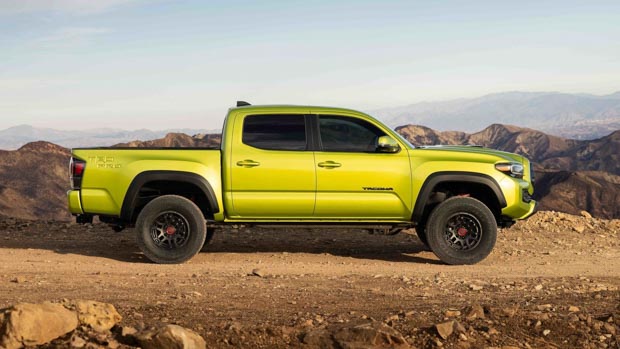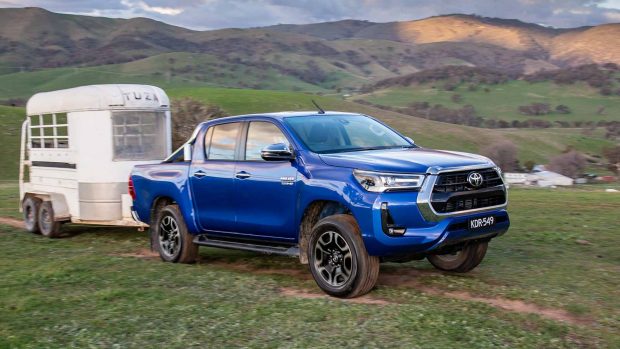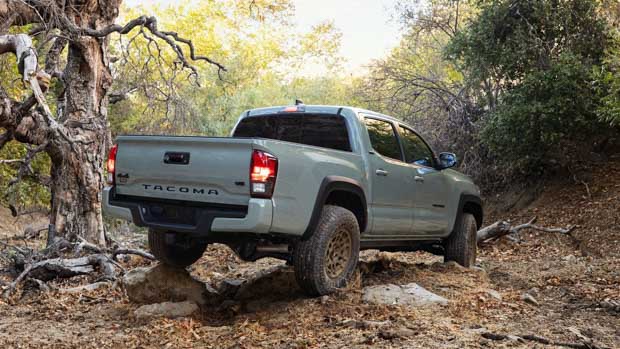-
Car Reviews
- Car News
-
Car Comparisons
Latest comparisons
- Chasing Deals
The next-generation Toyota Hilux ute will be reunited with a duo of American-market models, all sharing an adaptation of the brand’s TNGA platform.
The last time an Australian-market Toyota Hilux was closely related to the US-spec Toyota Tacoma ute was in mid-2004.
According to American publication Motor Trend, though, the two midsize utes will be reunited in the coming years atop a body-on-frame version of the Toyota New Global Architecture (TNGA) modular platform.
That duo of pick-up trucks will be joined by the US-market Toyota 4Runner, a Tacoma-based wagon that broadly aligns with the position of the Toyota Fortuner in Australia and southeast Asia.
Back in 2005, the decision was made by Toyota to differentiate the similarly-sized Hilux and Tacoma utes for their respective audiences, with the N220-N270 Tacoma and AN10-AN30 Hilux taking on distinct proportions and engines, though some mechanical parts were pooled.
Today’s N300 Tacoma and AN120-AN130 Hilux are distant cousins, with the slightly more refined and sophisticated Tacoma pitched as a smaller alternative to the North American-market Tundra full-size pickup.
Engineered for North America and currently built in Tijuana, Mexico, the Tacoma can be had with a choice of a 2.7-litre naturally aspirated four-cylinder petrol or Toyota’s well-known 3.5-litre direct-injected petrol V6.
The same four-cylinder petrol engine is the entry-level powertrain in the Thai-built Toyota Hilux familiar to Australian buyers, though the pair of turbo diesel four-cylinder engines fitted to most Hilux examples sold locally are not available on the Tacoma.
Meanwhile, the US-market 4Runner wagon predates both the Tacoma and Hilux, with the current N280 generation available since 2009 with a four-litre petrol V6 engine previously used on the last-gen Hilux and previous iterations of the Land Cruiser Prado and FJ Cruiser wagons.
The decision to reunite the Hilux, Tacoma and 4Runner echoes the same efficiencies underpinning the 2022 Land Cruiser 300 Series and the just-announced 2022 Tundra pick-up, which share the TNGA-F chassis – a rough-and-ready, body-on-frame adaptation of Toyota’s modular platform that shares some elements with the previous 200 Series ‘Cruiser.
It is entirely possible that the Hilux, Tacoma and 4Runner will utilise the same TNGA-F platform on a smaller scale.
TNGA-F is capable of supporting hybrid powertrains, with Toyota locking in a hybrid twin-turbo V6 petrol for the Tundra ute. Toyota Australia have committed to introducing a Hilux hybrid by 2030 and it is understood that the current platform is not ready for electrification in its present form.
Like other modular vehicle architectures, TNGA-F sits well beneath the seen visual design of the vehicles it is used for, meaning clear visual differences could remain for the Hilux and Tacoma.
However, Toyota have shown increasing desire in recent years to sell the same designs across previously distinct markets, with Australia receiving identical versions of US-market Toyota models including the Camry, RAV4 and Kluger, while the Corolla receives only mild distinction.
The brand’s small ute could follow in the same direction, again echoing history: the first-gen Tacoma was nearly identical, visually, to the sixth-generation Hilux sold in Australia between 1997 and 2005.
It’s also foreseeable that the distinct Fortuner model, long developed for southeast Asian markets only, will be discontinued with Toyota Australia returning to the 4Runner, which was most recently sold in this country in 1990.
As for when the next Hilux – and its Tacoma and 4Runner cousins – is to be released in Australia, history is once again a guide.
Hilux generations tend to run for just under a decade. With the most recent iteration of the Hilux appearing locally in 2015, expect to see the TNGA-based Hilux launched in 2023 or 2024 – or in about two years.
Whether we’ll see a Tacoma-shaped Hilux in Australia from that point, backed up with a 4Runner wagon to replace the Fortuner – no doubt we’ll hear more as the current model approaches retirement.
Latest news
About Chasing cars
Chasing Cars reviews are 100% independent.
Because we are powered by Budget Direct Insurance, we don’t receive advertising or sales revenue from car manufacturers.
We’re truly independent – giving you Australia’s best car reviews.



